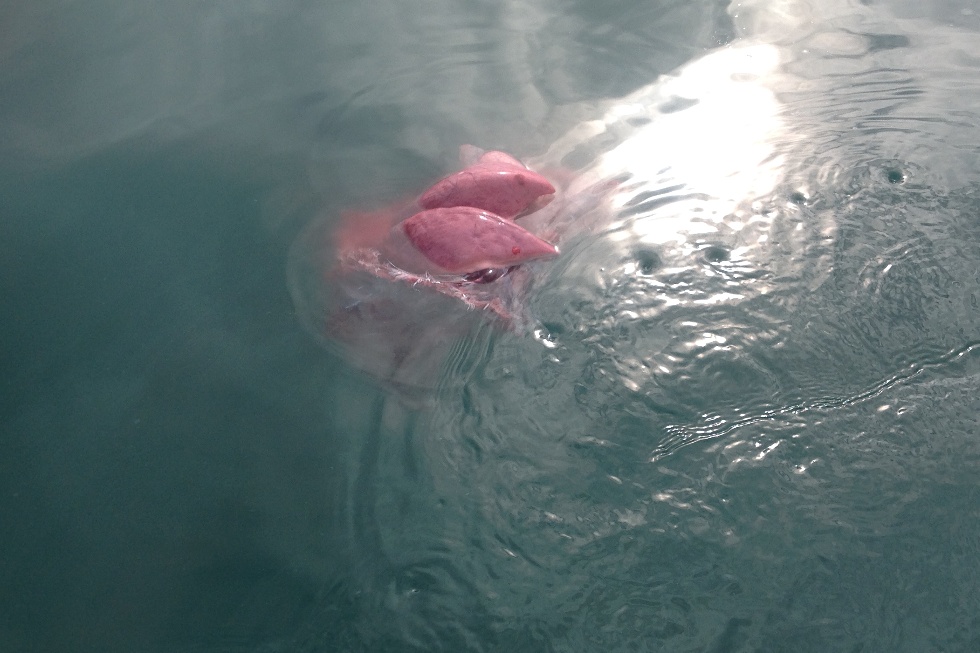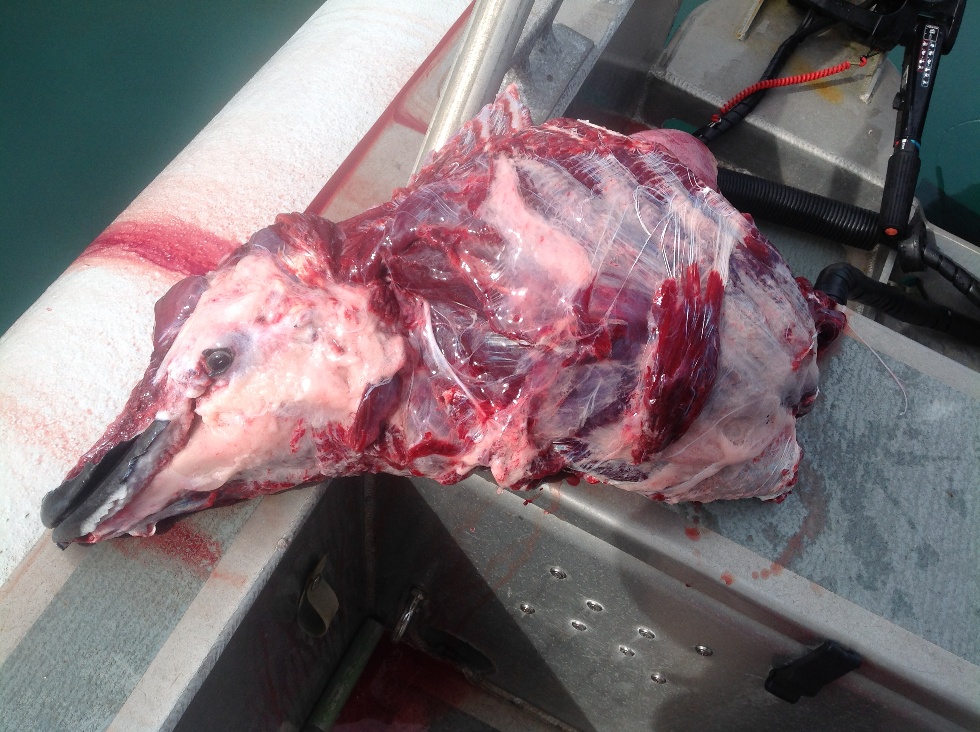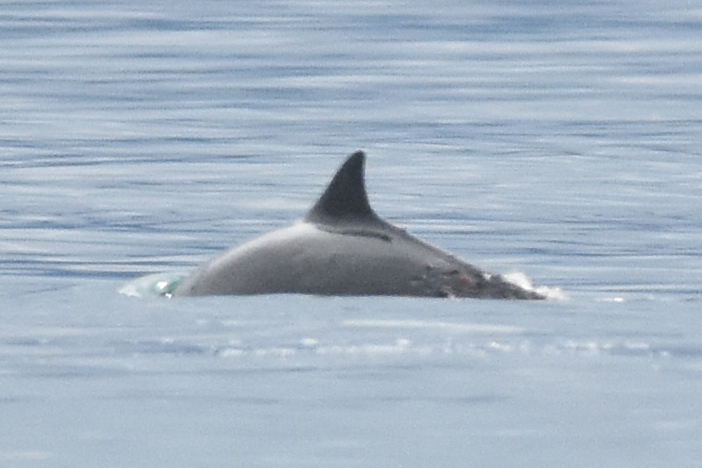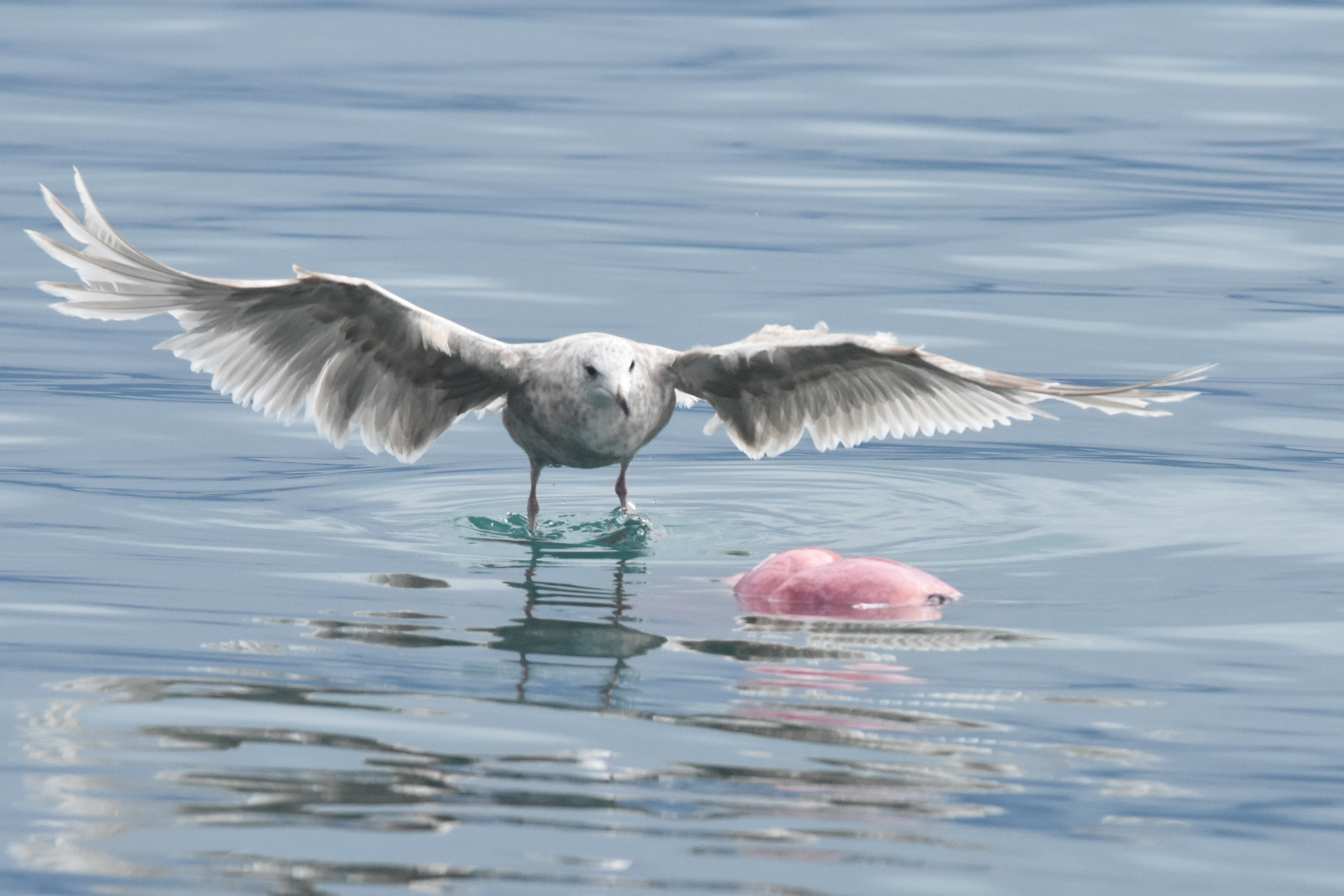
Answer: The lungs and remains from a harbor porpoise killed by transient killer whales last week in Icy Strait. Killer whales often eat their preferred body parts and organs and then leave the rest behind. In this photo, the head is hanging vertically in the water and is not clearly visible.
We pulled the carcass onboard briefly to collect a tissue sample for genetic analysis (see previous post about harbor porpoise genetics), and marveled at how incredibly adept the killer whales are at skinning their prey to access the parts, such as blubber, that they want to eat!

Here is a photo of the unlucky harbor porpoise just moments before it was killed (see multiple tooth marks behind the dorsal fin).

Within a few minutes, the group of four transient killer whales had breached on the porpoise, batted it around, and killed it. “Transient” is a killer whale ecotype that eats marine mammals (the other common ecotype seen in Glacier Bay and Icy Strait are resident killer whales, which eat fish – primarily salmon).

We returned the porpoise remains to the ocean, where they will be consumed by a variety of scavengers, including some gulls that quickly appeared on the scene to take a meal.

Photographs and samples were authorized by National Marine Fisheries Service research permits #15844-02 and #18529.
